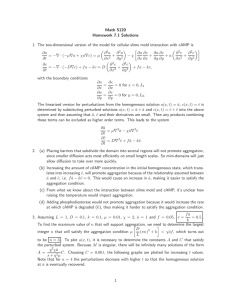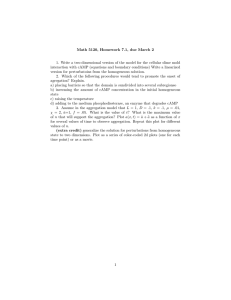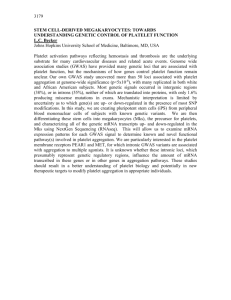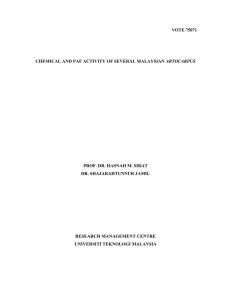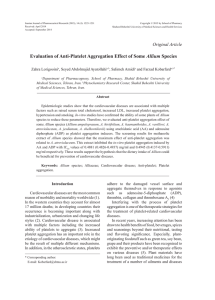Modelling Platelet Aggregation using Diffusion Limited Aggregation
advertisement
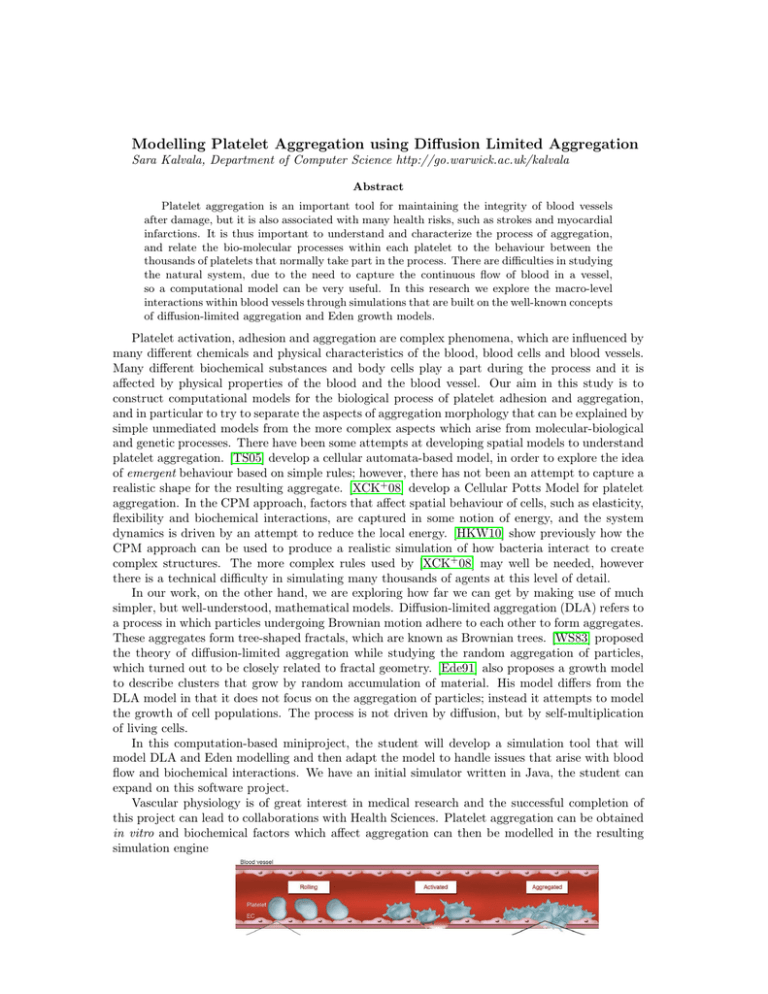
Modelling Platelet Aggregation using Diffusion Limited Aggregation Sara Kalvala, Department of Computer Science http://go.warwick.ac.uk/kalvala Abstract Platelet aggregation is an important tool for maintaining the integrity of blood vessels after damage, but it is also associated with many health risks, such as strokes and myocardial infarctions. It is thus important to understand and characterize the process of aggregation, and relate the bio-molecular processes within each platelet to the behaviour between the thousands of platelets that normally take part in the process. There are difficulties in studying the natural system, due to the need to capture the continuous flow of blood in a vessel, so a computational model can be very useful. In this research we explore the macro-level interactions within blood vessels through simulations that are built on the well-known concepts of diffusion-limited aggregation and Eden growth models. Platelet activation, adhesion and aggregation are complex phenomena, which are influenced by many different chemicals and physical characteristics of the blood, blood cells and blood vessels. Many different biochemical substances and body cells play a part during the process and it is affected by physical properties of the blood and the blood vessel. Our aim in this study is to construct computational models for the biological process of platelet adhesion and aggregation, and in particular to try to separate the aspects of aggregation morphology that can be explained by simple unmediated models from the more complex aspects which arise from molecular-biological and genetic processes. There have been some attempts at developing spatial models to understand platelet aggregation. [TS05] develop a cellular automata-based model, in order to explore the idea of emergent behaviour based on simple rules; however, there has not been an attempt to capture a realistic shape for the resulting aggregate. [XCK+ 08] develop a Cellular Potts Model for platelet aggregation. In the CPM approach, factors that affect spatial behaviour of cells, such as elasticity, flexibility and biochemical interactions, are captured in some notion of energy, and the system dynamics is driven by an attempt to reduce the local energy. [HKW10] show previously how the CPM approach can be used to produce a realistic simulation of how bacteria interact to create complex structures. The more complex rules used by [XCK+ 08] may well be needed, however there is a technical difficulty in simulating many thousands of agents at this level of detail. In our work, on the other hand, we are exploring how far we can get by making use of much simpler, but well-understood, mathematical models. Diffusion-limited aggregation (DLA) refers to a process in which particles undergoing Brownian motion adhere to each other to form aggregates. These aggregates form tree-shaped fractals, which are known as Brownian trees. [WS83] proposed the theory of diffusion-limited aggregation while studying the random aggregation of particles, which turned out to be closely related to fractal geometry. [Ede91] also proposes a growth model to describe clusters that grow by random accumulation of material. His model differs from the DLA model in that it does not focus on the aggregation of particles; instead it attempts to model the growth of cell populations. The process is not driven by diffusion, but by self-multiplication of living cells. In this computation-based miniproject, the student will develop a simulation tool that will model DLA and Eden modelling and then adapt the model to handle issues that arise with blood flow and biochemical interactions. We have an initial simulator written in Java, the student can expand on this software project. Vascular physiology is of great interest in medical research and the successful completion of this project can lead to collaborations with Health Sciences. Platelet aggregation can be obtained in vitro and biochemical factors which affect aggregation can then be modelled in the resulting simulation engine

